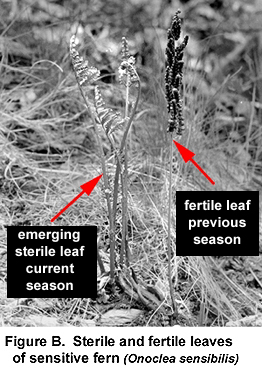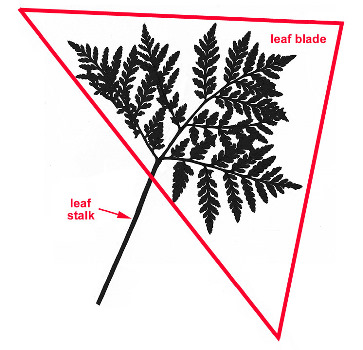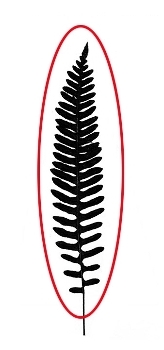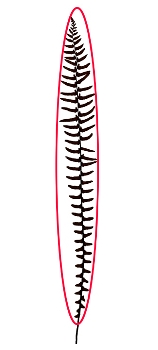|
xxxxx |
 |
|
. ** Plant
Finder ** |
||||
| .Home | Start Over | |||
|
.About Ferns |
||||
|
Got it! I already read this. Go to fern key now. |
||
|
If you've been studying ferns for a long time, and are comfortable with the terminology used to describe ferns, you may want to start using the key now. Just click the link above. For everyone else, it is recommended that you review the material below. For fern scientific morphology terms, click here. Of all the plant species found during this survey at Buttermilk Falls State Park, the ferns are the only plants that don't reproduce by seed. They don't produce flowers either. Instead, their reproductive process begins with spores, which disperse by wind from the parent plants, and continue their development by means of a multi-phased process. Though some ferns in other parts of the world (far away from here), may look like trees, our ferns don't have above-ground stems or branches. Instead, "leaves" of our fern species arise directly from underground organs such as rhizomes.
Fern leaves are also referred to as fronds
in scientific literature. Each fern frond is borne on a stalk
called a stipe:
the equivalent to a leaf stalk for a tree, shrub or
other
type
of
herbacious
plants. |
||
|
xxxxx |
 |
. This key will begin by asking you to describe the shape of the leaves of the fern you want to identify. What do we mean by "shape"? Imagine viewing a leaf as a silhoette, focusing on the perimeter of the leaf and ignoring, temporarily, what is within the perimeter. For example, is the leaf round, egg-shaped, oval shaped, very narrow and long, triangle-shaped or lance-shaped? Let's look at few examples. |
 |
|
Figure C. Egg-shaped silhouette of a black birch leaf. |
|
.
Later, the key will ask you about those other characters; most
importantly, whether the leaf is divided into primary and/or
secondary "segments".
Such leaves are called
compound
leaves. That simply means that the outline of the leaf is cleft multiple
times into segments, analogous to cutting a pie into slices.
Thus, the leaves of the polypody fern shown in
Figure
A above are cleft
into one series of primary segments.
Most
of our ferns have leaves that are compound leaves.
Shown
in
Figure
D
(below) are illustrations of three common types of fern leaf outlines. |
|
|
||
 |
 |
 |
|
|
| Figure D. (left to right) Triangular leaf outline, Elliptic leaf outline, Linear leaf outline |
| Sensitive fern is one of our most common ferns, often found in damp places. By way of a caveat, it's leaves are highly variable, no two seem exactly alike. |
|
|
| Figure E. Non-fertile leaf morphology of Sensitive fern ( Onoclea sensibilis ). | |
| This
specimen has a lot to teach us about ferns. The lowest two pairs
of segments attach to the main
axis by means of a short, thin
stalk. The pairs of segments above them, however, attach to the
main axis apparently without a short stalk.
Note also that the tissues of the individual segments are not joined together. That is, the segments are distinct from each other, separated by a gap or recess, which is called a sinus. This leaf is an example of a compound leaf that is "divided" ( cleft) once. The edges of most of the segments of this specimen are also coarsely toothed. Now, if instead of teeth, the edges of the segments had deep sinuses that extended more than half way to the midvein of the segment, we could say that the leaf was twice compound. In other words, the primary segments would also be divided into smaller secondary segments. |
| .Figure F. depicts an example of a leaf that is twice compound. The primary segments comprise the first division. In turn, each of those is divided into segments as well (except for the uppermost, very small segments). The secondary segments are not further divided, though the edges are finely toothed. |
|
|
|
Figure F. Twice compound fern leaf example: marginal woodfern. ( Dryopteris.marginalis ) |
|
|
|
Figure G. Three times compound leaf example of intermediate woodfern. ( Dryopteris intermedia ) |
| . | The above figure shows an example in which both the primary and secondary leaf segments are deeply cleft into smaller segments. | |
|
Are you ready to use the fern key? Go to fern key now. |
x
x
x
|
Images and text copyright Arieh Tal, 2017-2022. All rights reserved. ( Terms of Use ) |